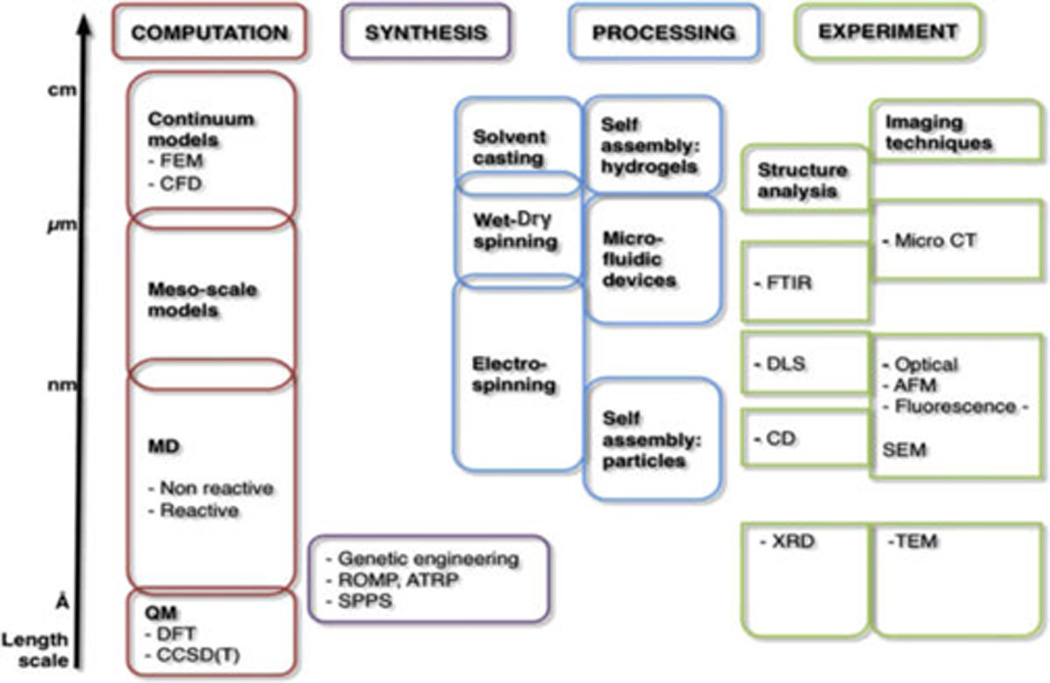Figure 4.

Overview of computational and experimental techniques that cover multiple scales, necessary for the systematic and holistic analysis of silk and silk-like materials, including materials design. Reprinted with permission from ref 178. Copyright 2012 Elsevier. The complex hierarchical structure of silk requires the use of a host of experimental and computational technique to move the analysis and synthesis of this material forward. Abbreviations are as follows: FEM, finite element method; CFD, computational fluid dynamics; MD, molecular dynamics; QM, quantum mechanics; DFT, density functional theory; CCSD(T), coupled cluster method; ROMP, ring opening metathesis polymerization; ATRP, atom transfer radical polymerization; SPPS, solid phase peptide synthesis; FTIR, Fourier transform infrared spectroscopy; DLS, dynamic light scattering; CD, circular dichroism spectroscopy; XRD, X-ray diffraction; MicroCT, microtomography; AFM, atomic force microscopy; SEM, scanning electron microscopy; TEM, transmission electron microscopy.
